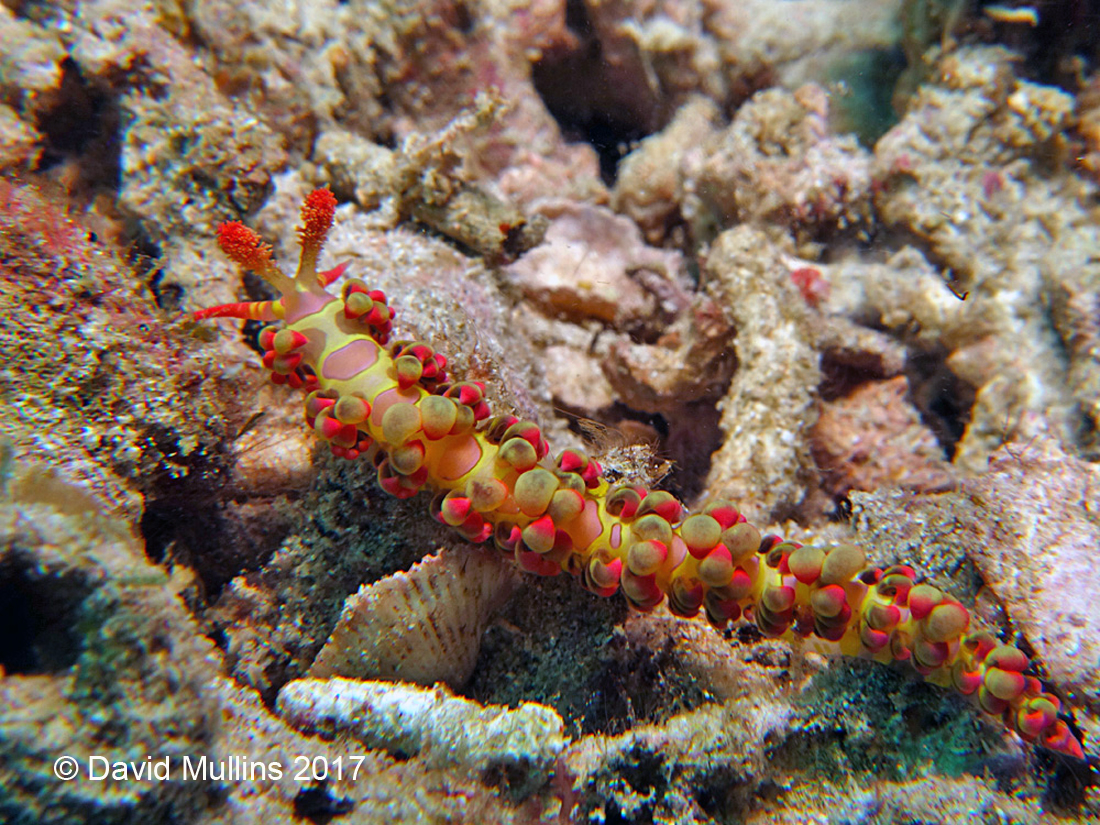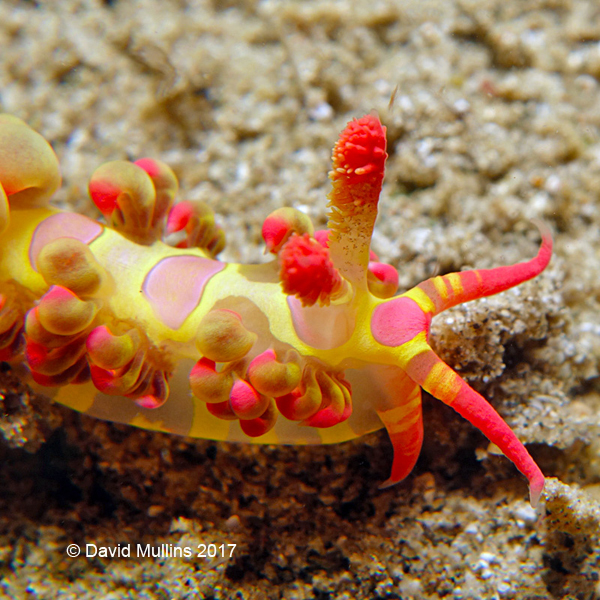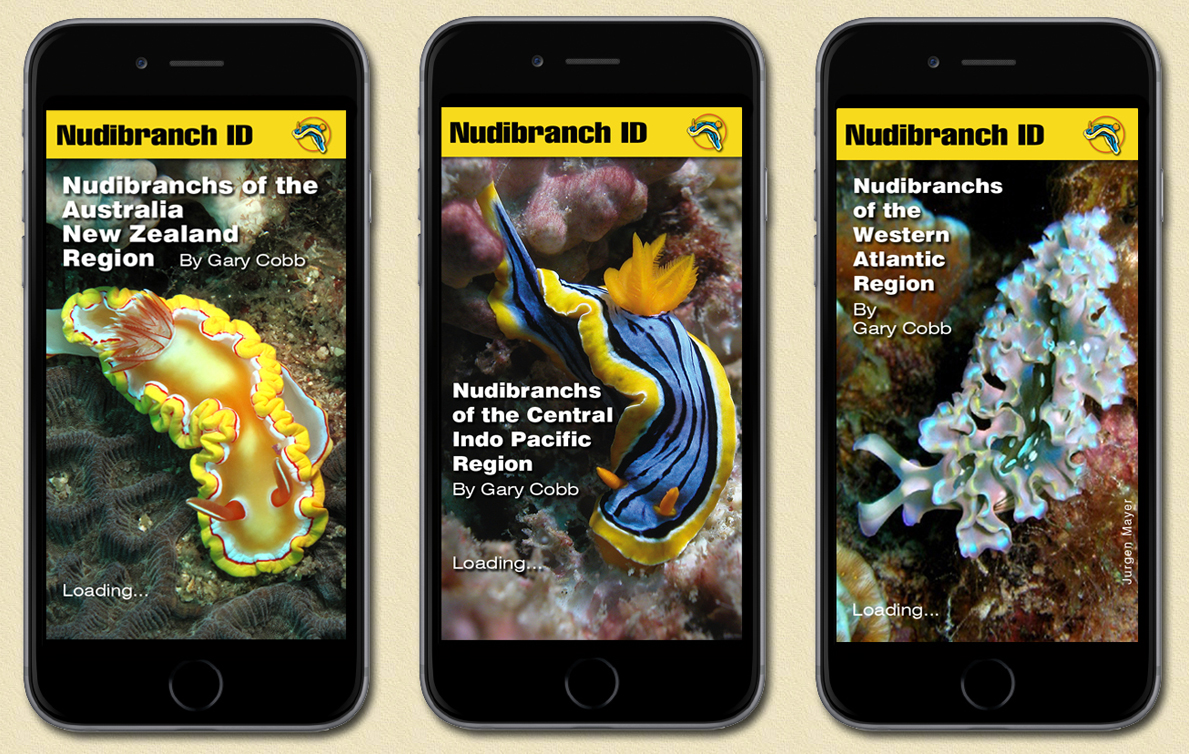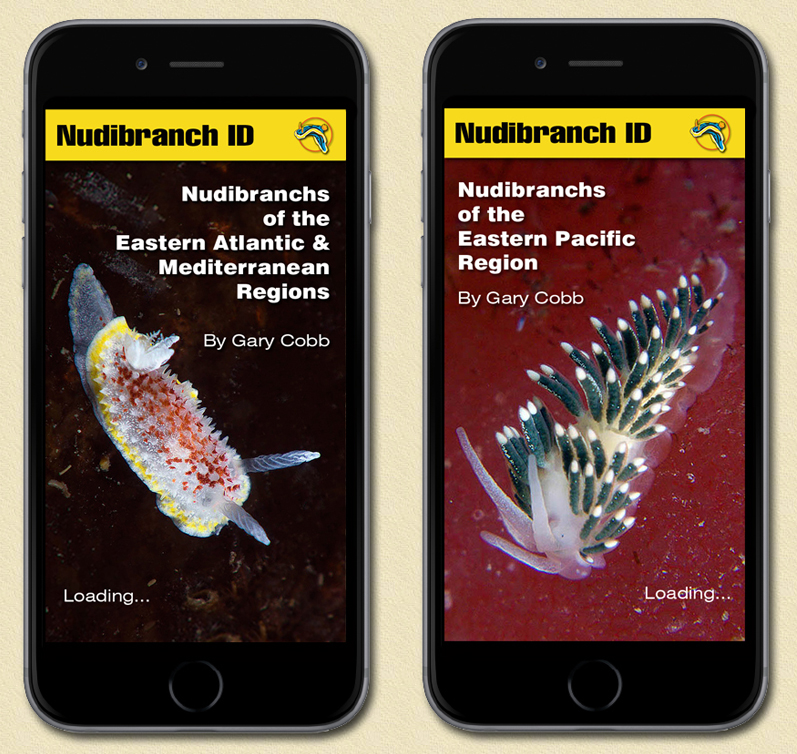 |
Limenandra barnosii.
Image courtesy of Dave Mullins6 metres, at night, in the rubble, Anilao, Batangas, Philippines
Sony DSC-RX100 in Nauticam Housing with wet macro diopter, Inon Z220 strobe.
 | Limenandra barnosii Carmona, Pola, Gosliner & Cervera, 2014 The nudibranchs are some of the most colourful creatures in the sea. The richness of colours and their combinations are astounding. However I don't ever recall referring to any of them as having "neon or fluro colours" until I saw my first specimen of Limenandra barnosii. Those greens, pinks and yellows just blow my mind. But wait, there is more than just the wonderful colour here...here are those outrageous patterns of concentric circles and alternating bands. Visually crazy stuff! Those lucky enough to have seen it refer to it amongst themselves as the "Neon Nudibranch". The taxonomic position and indeed the validity of Limenandra has only "recently" been settled with the publication of two papers, Carmona, et al, 2013 wherein molecular studies demonstrated its monophyletic status and Carmona, et al, 2014 wherein the previously known species of Limenandra were reviewed with additional morphological data and the inclusion of descriptions of three new species. Limenandra is a small genus of just 5 described species within the Aeolidiidae family. Previous publications may use the Baeolidia genus for some of these species. Limenandra barnosii has a distinct colouration and patterning that does not require further explanation from me. One look at the accompanying pictures tells all. Enjoy the visual feast. The rhinophores bear elongate papillae of irregular size to the posterior surface and around the sides giving a bushy appearance. Their bases are closely set. The oral tentacles are longer than the rhinophores and the anterior foot corners are tentaculate with a deep groove across the width. The moderately long fusiform cerata have inward curving tips and are arranged in double rows that in places arch over to meet the opposite row. The cerata are entirely smooth. Grows to 60 mm. Usually only seen at night, Limenandra barnosii feeds on the nocturnal anemone Alicia sansibarensis in sand and rubble from the shallows to the depths. It has been reported from the Philippines, Marshall Islands, Indonesia & New Caledonia. This is such an outstanding species I thought it deserved another entry on the Slug Site under its new and proper name. Previously recorded here: BOW 484 as Mystery Slug, BOW 578 as Mystery Slug revisited and BOW 598 as Baeolidia sp.
|
- Carmona L., Pola M., Gosliner T.M. & Cervera J.L. (2013) A tale that morphology fails to tell: a molecular phylogeny of Aeolidiidae (Aeolidida, Nudibranchia, Gastropoda). PloS One 8.
- Carmona L., Pola M., Gosliner T.M. & Cervera J.L. (2014) The end of a long controversy: systematics of the genus Limenandra (Mollusca: Nudibranchia: Aeolidiidae). Helgoland Marine Research, 68: 37-48.
Queensland, Australia
marineimages@hotmail.com
May 2017
Send Dave email at: marineimages@hotmail.com
Dave Mullins on location
 |
|
Nudibranch reference material comes in many shapes and sizes but primarily books and websites. The problem with reference books is outdated material and their weight when travelling. Taxonomy is changing and adding or altering names at a rapid rate. The problem with the Internet is range and accessibility.
Now, thanks to the development by and ongoing efforts of Gary Cobb there is a series of smart device applications called Nudibranch ID. Now you can reference nearly all the nudibranchs of the world from your Smart Device.
No web connection required.
The Nudibranch ID App Series:
These field guides will place right at your fingertips, anytime and anywhere, an outstanding selection of Nudibranchs found throughout the World.
Featuring:
Indo-Pacific - version 34.0 - 785 species
Eastern Pacific - version 28.0 - 428 species
Australia and New Zealand - version 34.0 - 1135 species
Eastern Atlantic/Mediterranean Sea - version 18.0 - 688 species
Western Atlantic - version 15.0 - 508 species
Indian Ocean/Red Sea - version 13.0 - 699 species
Western Pacific - version 6.0 - 783 species
Available as iPhone or Android versions.
These are true Apps not just simple identification guides. Search functions and the ability to create lists for emailing are game breakers in this field. They are updated (for free) regularly.
Visit: www.inudibranch.com for a full description.
 |
 |
